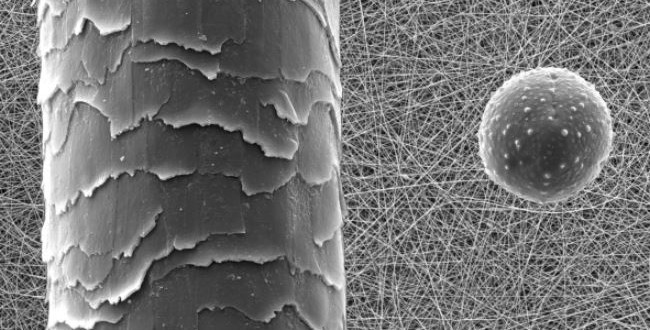Researchers are developing a state-of-the-art bandage that may be able to extract bugs out of wounds and accelerate the healing process, a report shows.
[GARD align=”left”] Scientists have discovered that microorganisms are transferred most easily to nanofiber meshes having the same diameters as the sizes of bacteria, researchers said at the 61st annual AVS International Symposium and Exhibition in the US city of Baltimore, Maryland, this week. As evidence,
Staphylococcus aureus, bacteria involved in chronic infection, quickly attached themselves to 500-nanometer-wide fibers, but rarely onto fibers with larger diameters. Researchers also found that when nanofibers were coated with various compounds like allylamine, a colorless organic compound, the target bacteria,
Escherichia coli, attached to the fibers, while other coatings like acrylic acid repelled the germs. Scientists have already begun injecting cell-carrying nanofibers into wounds to jump-start tissue repair, the researchers said.
They plan to run more studies to test the meshes on composites that resemble human skin in hopes that it will lead to smart wound dressings that could prevent infections. Some doctors expressed hope that the new nano-technology would enable them to stick the nano–Band-Aid on a wound and simply peel it off to get rid of the bugs. Japanese researchers have also made use of nanotechnology to develop the world’s thinnest Band-Aid which has surgical purpose. The new adhesive bandage, reported to be a thousand times thinner than plastic wrap, can effectively treat injuries to soft organs such as the lungs. It breaks down naturally after healing and becomes invisible in one month

